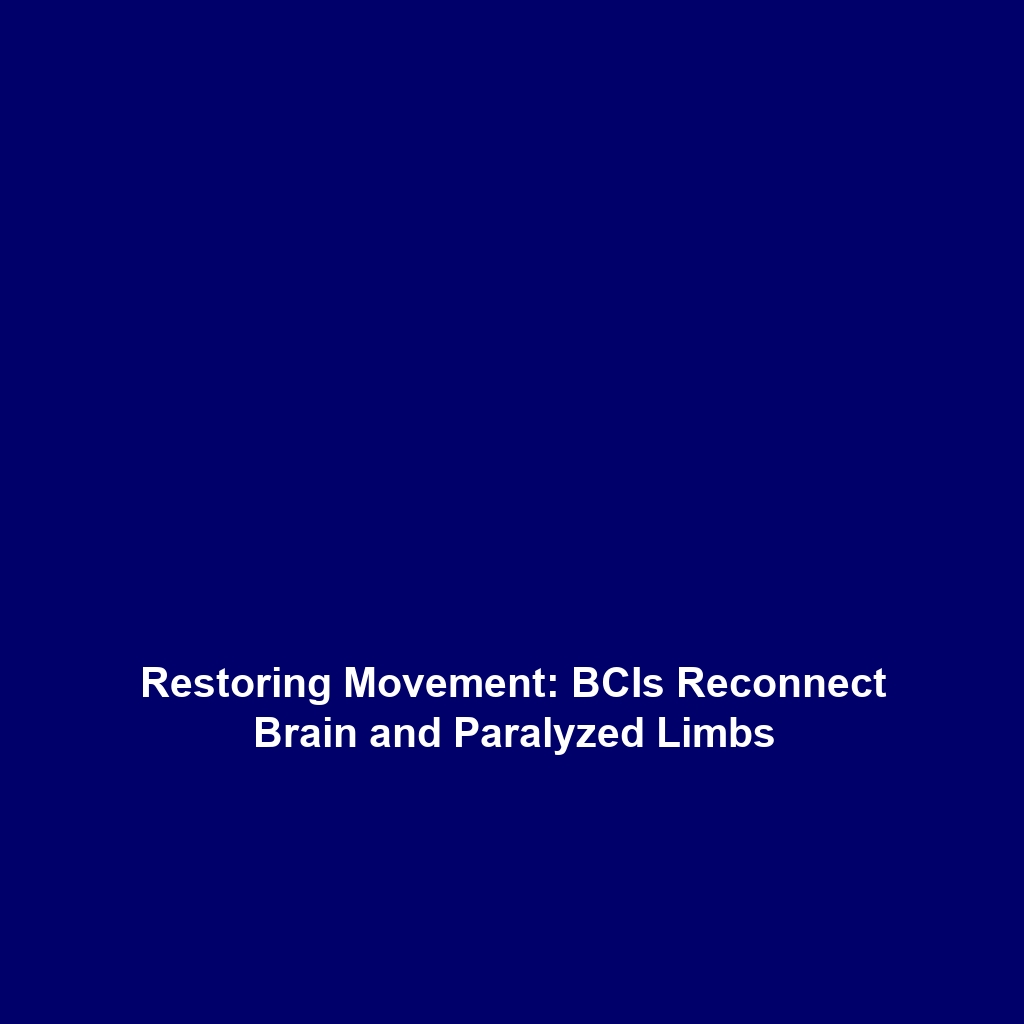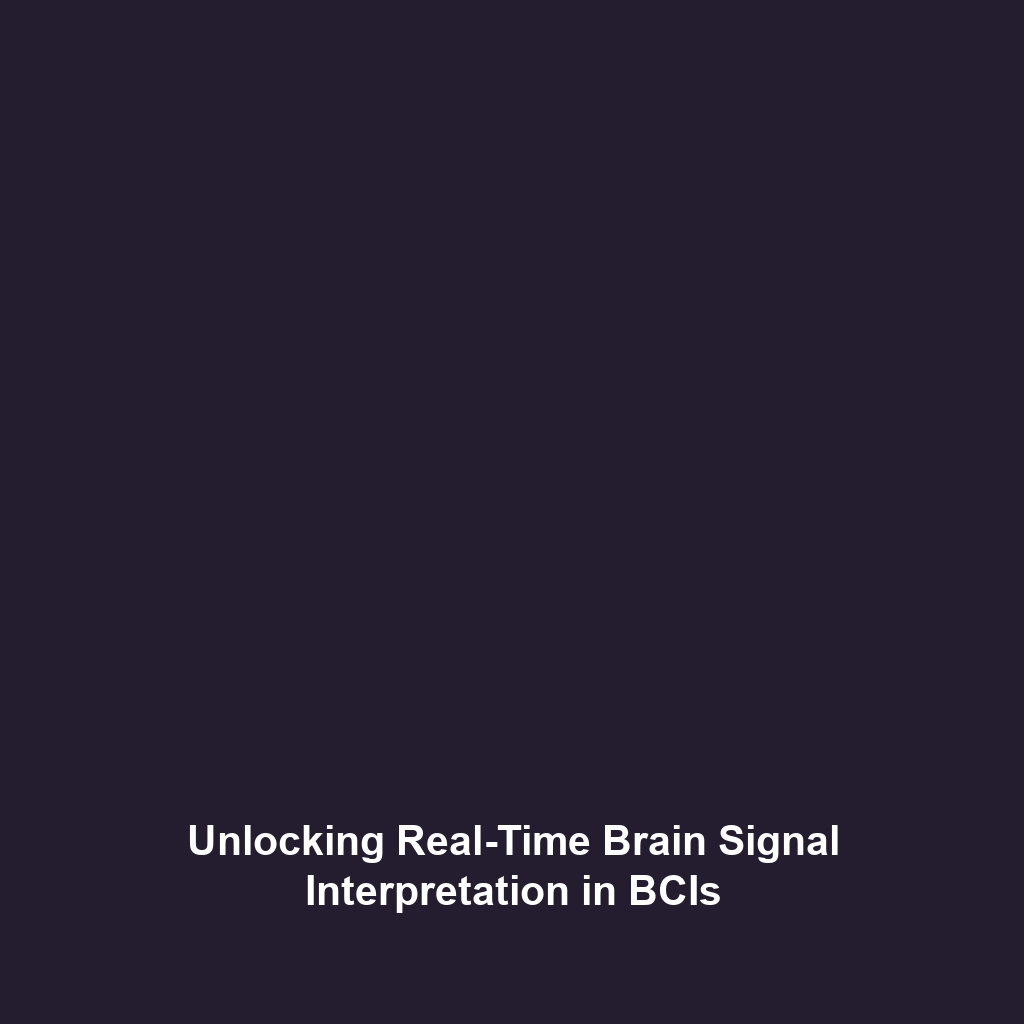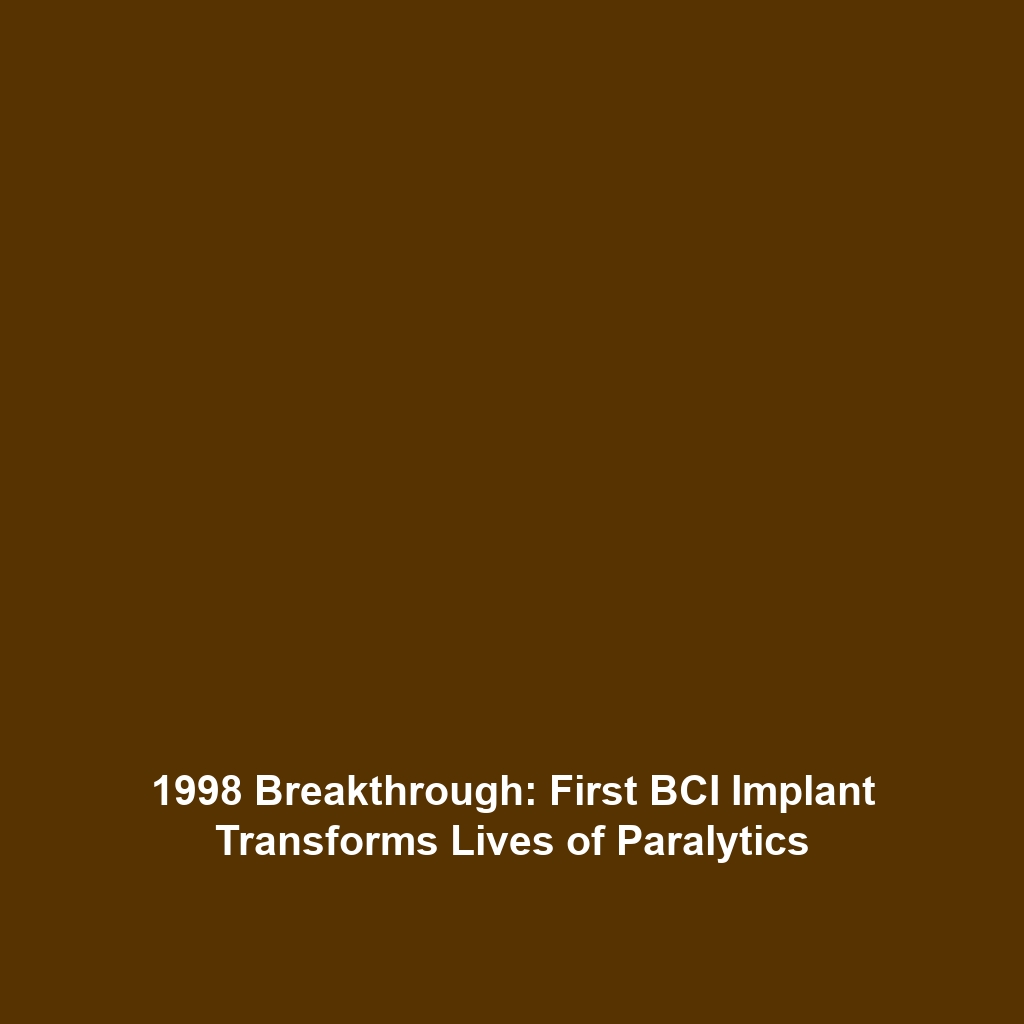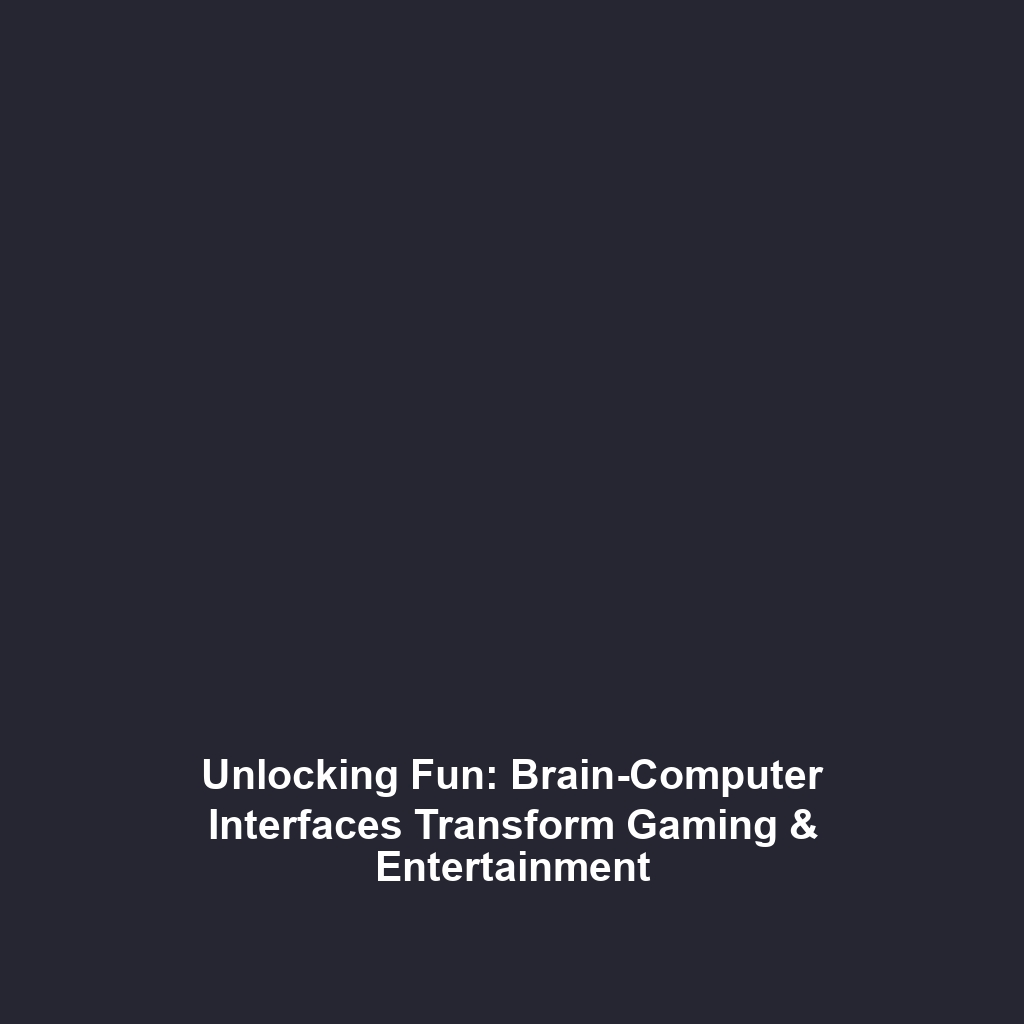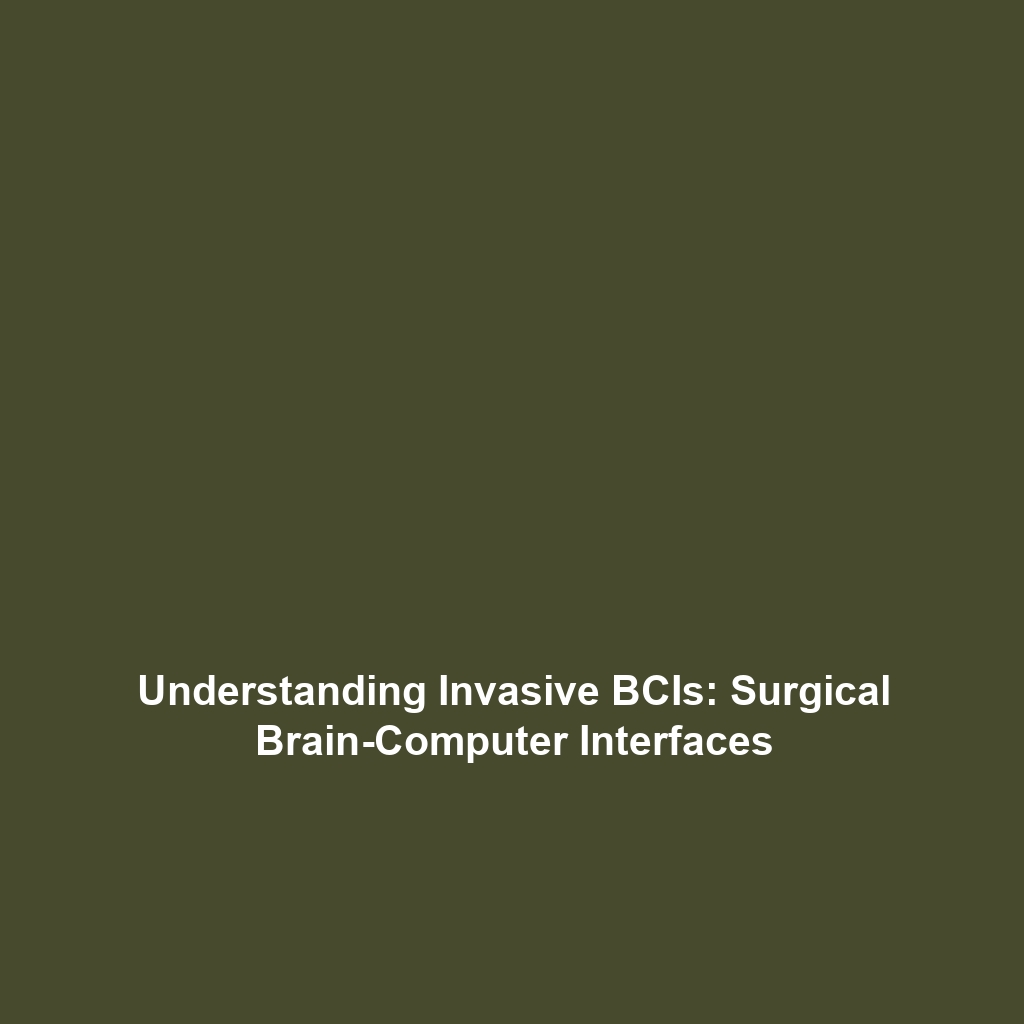Brain-Computer Interfaces and Spinal Cord Injury Rehabilitation
Introduction
Spinal cord injuries (SCI) represent a significant medical challenge, affecting millions globally by impairing mobility and bodily functions. Recent advancements in Brain-Computer Interfaces (BCIs) are paving the way for pioneering treatments that can help reestablish connections between the brain and the body. By utilizing electrical stimulation technology, BCIs enable controlled movement of paralyzed limbs, highlighting their crucial role in SCI rehabilitation. This article explores the intersection of spinal cord injury and BCIs, delving into their implications for restoring independence and improving quality of life for affected individuals.
Key Concepts
Understanding how BCIs function in the context of spinal cord injuries requires familiarity with several key concepts:
- Brain-Computer Interfaces (BCIs): These systems facilitate direct communication between the brain and external devices through neural signals.
- Electrical Stimulation: A method used to activate muscles and nerves, potentially enabling movement in paralyzed limbs.
- Neuroplasticity: The brain’s ability to adapt and reorganize itself, which is critical for developing new pathways post-injury.
BCIs fit into the broader category of spinal cord injury rehabilitation by bridging the gap between neurological signals and physical movement, creating innovative avenues for treatment.
Applications and Real-World Uses
The applications of BCIs in treating spinal cord injuries are transformative:
- Prosthetic Control: BCIs allow users to control prosthetic limbs directly with their thoughts, enhancing functionality.
- Functional Electrical Stimulation (FES): This technology can help restore movement in paralyzed limbs by applying electrical currents to stimulate nerves.
- Rehabilitative Robotics: BCIs are being integrated with robotic exoskeletons, offering assisted mobility to paralyzed patients.
Such advancements illustrate how BCIs are revolutionizing rehabilitation methods for individuals with spinal cord injuries.
Current Challenges
Despite promising advancements, several challenges impede the widespread use of BCIs in spinal injury rehabilitation:
- Technical Limitations: Issues with signal reliability and processing speed can hinder effective communication between brain activity and BCI mechanisms.
- Regulatory Hurdles: The approval process for new medical devices and therapies can be lengthy and complex.
- Cost and Accessibility: High costs associated with BCI technology limit access for many patients who need it.
Future Research and Innovations
As research progresses, several innovations are on the horizon:
- Advanced Neural Interfaces: Developing more precise interfaces that can record and stimulate neural activity at a higher resolution.
- AI Integration: Utilizing artificial intelligence to enhance the adaptability of BCIs, tailoring the systems to individual user needs.
- Regenerative Medicine: Combining BCIs with stem cell therapies to repair damaged spinal cord tissue is a promising area of exploration.
Conclusion
In summary, Brain-Computer Interfaces hold immense potential in the rehabilitation of spinal cord injuries, offering hope for improved mobility and restored independence. Continued research and innovation are essential to overcoming current challenges and enhancing the efficacy of these technologies. For more insights into the future of rehabilitation science, visit our sections on Neuroplasticity and Assistive Technologies.
